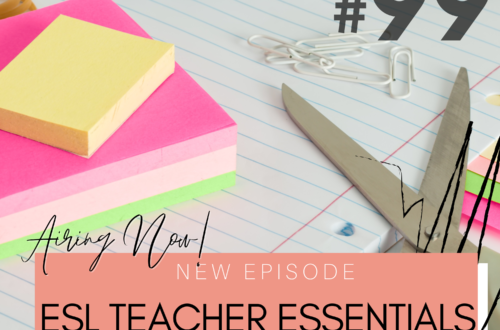
How to balance multiple level ESL students: 3 Strategies for your ESL Classroom
ESL teachers around the world all have the same question….”How do I teach when I have 4 or 5 different levels of ELLs in my classroom?” This may seem overwhelming at first, especially when you first start teaching. Even if you are a veteran teacher you can still feel overwhelmed by having various levels in your classroom. Here are some strategies in how you can balance multiple level English Learners in your classroom.
Keep it Simple
You are probably thinking that is easier said than done, but I promise you this is a strategy that can transform how you teach and support multiple level English Language Learners. You can teach the same skill to all the levels of students in your classroom. Even if they are on different levels they can still learn the same skill and/or topic. For example, you can teach the whole class how to cite evidence or analysis the text. There may be some students who are ready for analyzing the evidence. Whereas there may be some students who will need a graphic organizer to cite the evidence. The skill is the same, but you are going to have smaller groups who will be doing different variations of the skills. If you have different grade levels, the same strategy can be applied. If you teach grades 2-4 grade, teaching the same skill or topic can be taught. Here is another example, you can teach the weather cycle to your 2-4 graders. As mentioned earlier that topic can be taught across all grade levels. Now to meet the needs of multiple ELLs you might have to leveled text and have supports in place for the different levels of students. NOTE: This will require a STRONG classroom management plan, so keep that in mind.

Implement Literacy Stations
Literacy stations are an amazing way to support multiple levels of English Language Learners in your classroom. Reading Rockets defines A literacy station as a designated area in the room that is designed to help students work independently and collaboratively. Some examples of literacy stations you can use include reading center, writing center, listening center, and a speaking center. These centers support the four domains of language and allow you as a teacher time to balance multiple level ELLs. For literacy stations to work in your ESL classroom, you will need to have a plan in place on how you are going to implement the literacy stations. So think about when you are planning out your literacy stations, how are the students going to transition. Brainstorm when will the students go to stations and how much time will they spend at each station. What are your expectations while the students are at each station. You will also need to plan out the activities at each station. Write down these all down and explicitly teach your students the procedures of each station. This strategy requires some sweat equity up front (putting in some extra work), however it is going to PAY OFF BIG!

The Power of Differentiation
What is differentiation? The definition of differentiation is adjusting your instruction to meet the needs of your students in this case the needs of your English Language Learners. As a teacher you can differentiate the content, process, learning environment, or the product. This benefits you greatly if you have multiple levels of English Language Learners. This allows you group your students based on their needs. Then you can provide them with specialized instruction. You can have leveled books, tiered assignments, and/or special grouping. Differentiation is a powerful strategy that you can use in ANY classroom.
Balancing multiple level ELLs can be a challenge. I cannot wait to hear more about how these strategies transform your multi-level ESL classroom. Share in the comments how you are balancing for your ELLs.




2 Comments
Susan
So much power to keeping it simple!!
Millie
Yes! I have to remind myself that all the time. I ask myself is there a way to keep this simple and to the point.